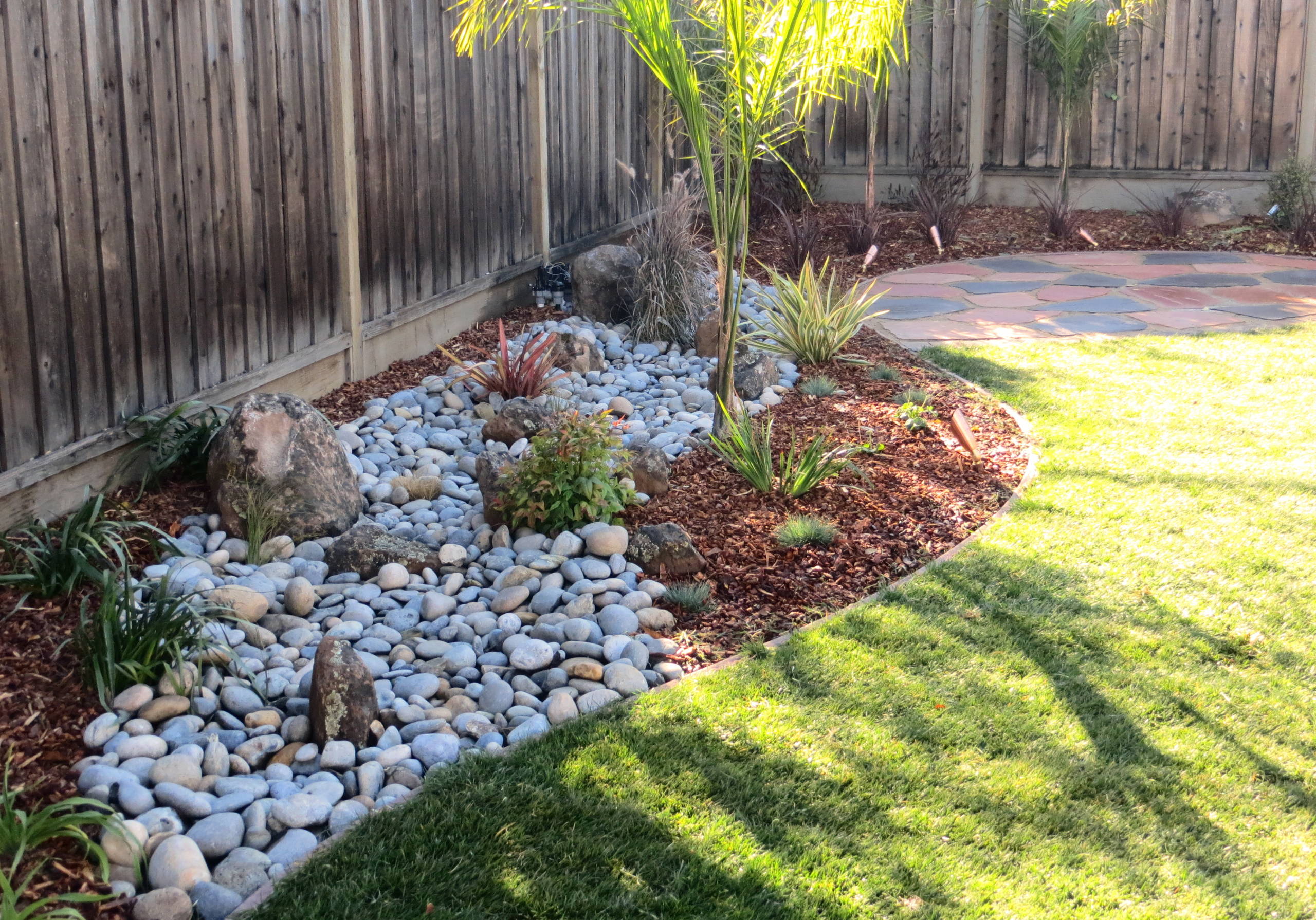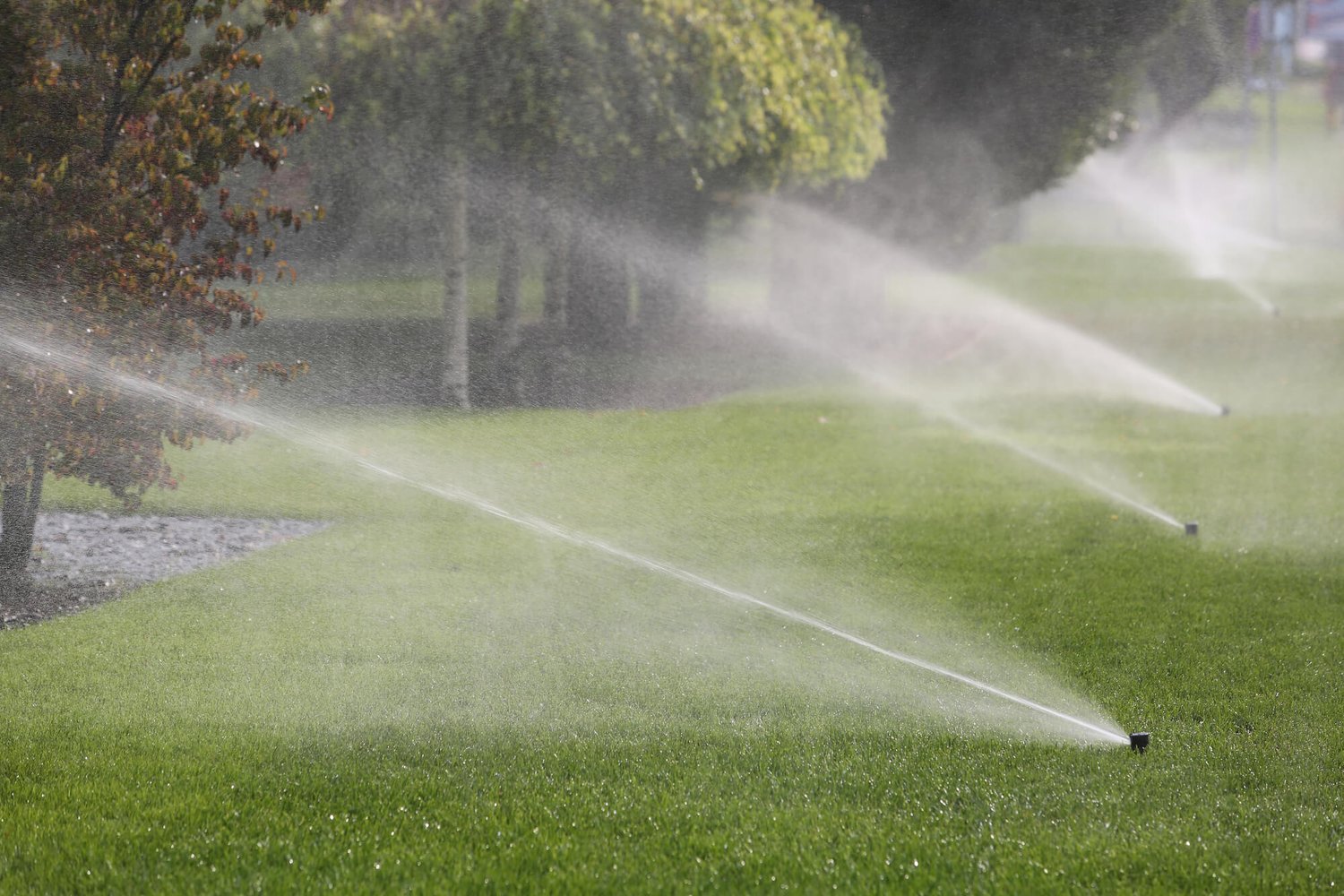Home>Garden Design>Planning Your Garden>How Do I Write A Landscaping Invoice


Planning Your Garden
How Do I Write A Landscaping Invoice
Modified: January 22, 2024
Learn how to write a professional landscaping invoice, including tips on planning your garden. Increase efficiency and impress your clients.
(Many of the links in this article redirect to a specific reviewed product. Your purchase of these products through affiliate links helps to generate commission for Chicagolandgardening.com, at no extra cost. Learn more)
Table of Contents
- Introduction
- Understanding the Purpose of a Landscaping Invoice
- Essential Information to Include in a Landscaping Invoice
- Formatting and Structure of a Landscaping Invoice
- Step-by-Step Guide to Writing a Landscaping Invoice
- Common Mistakes to Avoid in Landscaping Invoicing
- Tips for Improving Accuracy and Efficiency in Creating Invoices
- Conclusion
Introduction
As a professional landscaper, creating and sending invoices is an essential part of running your business. An invoice serves as a record of the services you have provided to your clients and outlines the amount they owe you. It also acts as a communication tool to ensure that both you and your clients are on the same page regarding the scope of work and the associated costs.
While landscaping itself may be your passion, invoicing can sometimes feel like a daunting task. However, by understanding the purpose and importance of a landscaping invoice, as well as learning the best practices for creating and formatting one, you can streamline the invoicing process and ensure that you get paid promptly for your hard work.
This comprehensive guide will walk you through the process of writing a landscaping invoice. We will cover the essential information to include in an invoice, the proper formatting and structure, and how to avoid common mistakes. We will also provide tips for improving accuracy and efficiency when creating invoices, ultimately helping you run your landscaping business more smoothly and professionally.
Whether you are a seasoned landscaper looking to revamp your invoicing process or a newcomer to the industry seeking guidance, this article will equip you with the knowledge and tools to effectively write a landscaping invoice.
Understanding the Purpose of a Landscaping Invoice
A landscaping invoice serves several crucial purposes for both you and your clients. It is more than just a payment request; it is a document that outlines the details of the services rendered, the cost associated with each service, and the terms of payment.
Here are some key purposes of a landscaping invoice:
- Record Keeping: Invoices provide a detailed record of the work you have completed for each client. It helps you keep track of the services provided, dates, quantities, and any additional expenses incurred.
- Communication: An invoice is a way to clearly communicate with your client about the services performed and the charges associated with them. It helps to avoid any confusion or misunderstandings regarding the scope of work and the associated costs.
- Payment Request: The primary purpose of an invoice is to request payment for the services rendered. It provides a breakdown of the total amount owed, including any taxes, discounts, or late fees, and specifies the due date for payment.
- Professionalism: A well-crafted invoice adds a touch of professionalism to your business. It demonstrates that you operate in an organized and efficient manner, which can leave a positive impression on your clients.
By providing thorough and accurate invoices, you establish trust and transparency with your clients. They can refer to the invoice for their own records and use it as a basis for any future discussions or inquiries. Likewise, maintaining detailed records of all your invoices enables you to keep track of your financials, prepare for tax filings, and easily follow up on any unpaid invoices.
Essential Information to Include in a Landscaping Invoice
When it comes to creating a landscaping invoice, including the right information is crucial to ensure clear communication and prompt payment. Here are the essential details that should be included in your invoice:
- Your Business Information: Start by including your business name, logo, and contact information at the top of the invoice. This helps your client identify who they are receiving the invoice from and provides them with your contact details for any inquiries or clarifications.
- Client Information: Clearly state the name, address, and contact information of the client you are billing. Ensure accuracy to avoid any confusion or delays in the payment process. If you are working with multiple contacts within the same company, specify the appropriate contact person for billing purposes.
- Invoice Number and Date: Assign a unique invoice number to each transaction for easy reference and tracking. Also, include the invoice date to indicate when the invoice was issued to the client. Both the invoice number and date are essential for record-keeping and organization.
- Description of Services: Provide a detailed breakdown of the services you have performed for the client. Include the date(s) of service, the type of work completed, the number of hours spent, or any materials used. Be specific and transparent to avoid any confusion regarding the services rendered.
- Cost of Services: Clearly state the cost of each service or item provided. Break it down by the quantity, rate, and any applicable taxes. You may also list any additional fees, such as delivery charges or disposal fees, separately.
- Total Amount Due: Summarize the total amount due for all the services provided, including any applicable taxes and fees. Ensure that the calculations are accurate and that the client can easily identify and understand the final amount they are required to pay.
- Payment Terms: Clearly specify the terms of payment, including the due date, acceptable payment methods (such as cash, check, or electronic transfer), and any late payment penalties or discounts for early payments. This information makes it clear to the client what is expected in terms of payment.
- Additional Notes: Allow space for any additional notes or special instructions related to the invoice or the services rendered. This can include warranty information, terms and conditions, or any specific agreements made with the client.
By including these essential details in your landscaping invoice, you provide clarity and transparency to your clients, making it easier for them to process and fulfill the payment promptly.
Formatting and Structure of a Landscaping Invoice
The formatting and structure of your landscaping invoice play a significant role in ensuring clarity, professionalism, and ease of understanding for both you and your clients. Here are some guidelines to follow when formatting and structuring your invoice:
- Clear and Consistent Design: Use a clean and professional design for your invoice. Consider incorporating your business logo and colors to align with your branding. Make sure the text is legible and easy to read by using a standard font and a reasonable font size.
- Header: Start your invoice with a clear and concise header that includes your business name, logo, and contact information. This helps to establish your identity and make it easy for clients to reach out to you.
- Invoice Information: Include a prominent section that states the invoice number, date of issue, and payment due date. This information helps both you and your clients track and manage invoices efficiently.
- Client Information: Clearly display the client’s name, address, and contact details. Make sure the information is accurate and easily identifiable to avoid any mix-ups.
- Itemized Services: Organize and list the services you provided in a clear and concise manner. Include a description of each service, along with the quantity, rate, and total cost. This breakdown allows clients to understand the charges and compare them to the initial agreement.
- Totals and Taxes: Summarize the total cost of all services provided and clearly state any applicable taxes or fees. Ensure that the calculations are accurate, and make it easy for clients to identify the grand total amount due.
- Payment Terms: Clearly outline the payment terms, including the accepted payment methods, due date, and any late payment penalties or discounts. This ensures that both you and your clients are aware of the agreed-upon terms and avoids any payment confusion or disputes.
- Additional Information: Provide any additional information relevant to the invoice or services, such as warranty details, return policies, or special instructions. Including these details helps to address any potential questions or concerns the client may have.
- Professional Sign-off: End your invoice with a professional sign-off, including your name, title, and contact information. This personal touch adds a sense of professionalism and accessibility to your client relationships.
Remember, consistency and clarity are key when formatting and structuring your landscaping invoice. By following these guidelines, you can create invoices that are easy to understand, visually appealing, and align with your professional image.
Step-by-Step Guide to Writing a Landscaping Invoice
Writing a landscaping invoice may seem overwhelming, but it becomes more manageable when you follow a step-by-step process. Here’s a guide to help you write a landscaping invoice:
- Gather the Necessary Information: Collect all the information required for the invoice, including your business details, client details, service descriptions, quantities, rates, and any applicable taxes or fees.
- Choose an Invoice Template: Select an invoice template that suits your business style and needs. There are various options available online, or you can create a customized template using spreadsheet software or accounting software.
- Include Your Business Information: Add your business name, logo, and contact information at the top of the invoice. This helps clients easily identify your business and reach out to you if needed.
- Add Client Information: Clearly state the client’s name, address, and contact details. Double-check the accuracy of this information to avoid any correspondence or payment delays.
- Assign an Invoice Number: Give each invoice a unique identification number. This helps track and organize your invoices for future reference and record-keeping.
- Specify the Invoice Date: Indicate the date when the invoice was issued. This is important for both you and the client to keep track of the billing period.
- List the Services Provided: Provide a detailed description of each service you performed for the client. Include the date(s) of service, the type of work completed, and any relevant details that clarify the nature of the service.
- Breakdown the Costs: Clearly specify the cost of each service, including the quantity, rate, and total amount. If applicable, list any additional charges, taxes, or discounts separately.
- Calculate the Total Amount Due: Summarize the total amount owed by the client for all the services provided, including any applicable taxes and fees. Ensure that the calculations are accurate and easy to understand.
- Set Payment Terms: Clearly state the payment due date and accepted payment methods. Include any late payment penalties or early payment discounts if applicable. This ensures both parties are aware of the payment expectations and deadlines.
- Review and Finalize: Carefully review the invoice to ensure accuracy and clarity. Double-check all the information, calculations, and spelling. Once you are confident that everything is correct, finalize and save the invoice.
By following this step-by-step guide, you can efficiently create professional and comprehensive landscaping invoices that effectively communicate the details of your services and facilitate timely payment.
Common Mistakes to Avoid in Landscaping Invoicing
When it comes to invoicing for your landscaping services, it’s important to be aware of common mistakes that can hinder the payment process and cause unnecessary headaches. By avoiding these mistakes, you can streamline your invoicing process and improve client satisfaction. Here are some common mistakes to avoid in landscaping invoicing:
- Incomplete or Inaccurate Information: Ensure that all the necessary information, such as your business details, client details, and service descriptions, are complete and accurate. Incomplete or inaccurate information can lead to confusion, delayed payments, or even non-payment.
- Omitting Important Terms and Conditions: It is crucial to clearly communicate your payment terms, including the due date, accepted payment methods, and any late payment penalties or discounts. Failing to include this information can lead to misunderstandings and disputes regarding payment expectations.
- Not Providing a Detailed Breakdown: A lack of detailed information on the services rendered can lead to client confusion and questions. Provide a clear and specific breakdown of each service, including dates, quantities, rates, and any additional fees or materials used.
- Miscalculating Totals: Make sure to double-check all calculations to ensure accuracy. Incorrect totals can lead to incorrect payment amounts and may cause delays in payment or client dissatisfaction.
- Unprofessional or Inconsistent Design: Presenting your invoice in an unprofessional or inconsistent manner can reflect poorly on your business. Use a clean and professional design, and consider incorporating your business logo and colors for brand consistency.
- Not Sending Invoices in a Timely Manner: Delaying the sending of invoices can result in delayed payments. Aim to send your invoices promptly after completing the service to maintain a steady cash flow and avoid payment delays.
- Failure to Follow Up on Overdue Invoices: If an invoice is not paid by the due date, it’s essential to follow up with the client. Regularly monitor your outstanding invoices and send reminders or make phone calls to ensure timely payment.
- Forgetting to Keep Copies and Maintain Records: It’s crucial to keep copies of all your invoices and maintain proper records. This helps with tracking payments, monitoring outstanding invoices, and making it easier to handle any potential disputes or inquiries from clients.
By avoiding these common mistakes, you can present professional and accurate invoices, improving your chances of receiving timely payments and maintaining positive client relationships.
Tips for Improving Accuracy and Efficiency in Creating Invoices
Creating accurate and efficient invoices is essential for the smooth operation of your landscaping business. By implementing the following tips, you can improve your invoicing process and ensure that your invoices are accurate, clear, and delivered in a timely manner:
- Use Invoice Software: Consider using invoice software or accounting tools specifically designed for creating and managing invoices. These tools automate calculations, maintain records, and offer customizable templates to save you time and improve accuracy.
- Standardize Your Invoice Templates: Develop a standardized invoice template that includes all the necessary information and maintains a consistent layout. This ensures that you don’t miss any crucial details and streamlines the process of creating invoices.
- Keep Track of Work and Expenses: Maintain detailed records of your work and expenses, including dates, time spent, materials used, and associated costs. Accurately tracking this information allows you to create precise and comprehensive invoices.
- Invoice Immediately after Completing a Job: Submit your invoices promptly after completing a job. This practice helps prevent delays in payment and ensures that the client receives the invoice while the service is still fresh in their minds.
- Double-Check all Information and Calculations: Take the time to thoroughly review your invoices for any errors or discrepancies before sending them to clients. Double-check all information, calculations, and payment terms to ensure accuracy and avoid any misunderstandings.
- Communicate Clearly with Clients: Establish clear communication with your clients regarding your invoicing procedures. Clearly explain your payment terms, due dates, and any necessary payment instructions to ensure that everyone is on the same page.
- Set Reminders for Overdue Invoices: Create a system for tracking and following up on overdue invoices. Set reminders to prompt you to follow up with clients who have not made payment by the due date, helping you maintain a steady cash flow.
- Offer Multiple Payment Options: Provide your clients with various payment options, such as credit card, check, or online payment platforms, to make it convenient for them to settle their invoices. This flexibility can improve the efficiency of the payment process.
- Establish a Professional Relationship: Foster a professional and respectful relationship with your clients. This can help ensure timely payment and encourage open communication if any issues arise during the invoicing process.
- Keep Copies of Invoices: Always keep copies of your invoices for your reference and record-keeping purposes. This helps you maintain accurate financial records and quickly address any inquiries or disputes that may arise.
By implementing these tips, you can enhance the accuracy and efficiency of your invoicing process, resulting in smooth transactions, improved cash flow, and satisfied clients.
Conclusion
Writing a landscaping invoice may seem like a daunting task, but with the right knowledge and approach, it can become a seamless and efficient part of your business operations. A well-crafted invoice not only serves as a record of your services but also communicates payment expectations clearly to your clients.
Throughout this comprehensive guide, we have covered the essential information to include in a landscaping invoice, the formatting and structure best practices, step-by-step instructions for writing an invoice, common mistakes to avoid, and tips for improving accuracy and efficiency.
By including all the necessary details in your invoice, such as your business information, client details, service descriptions, and payment terms, you ensure clear communication and transparency. Additionally, maintaining a professional and consistent design helps to strengthen your brand image and leave a positive impression on your clients.
Avoiding common invoicing mistakes, such as incomplete information, miscalculations, or delays in sending invoices, can prevent payment delays and foster better client relationships. Utilizing invoice software, standardizing your template, and keeping accurate records of your work and expenses contribute to both accuracy and efficiency in your invoicing process.
Remember, invoicing is not just about requesting payment; it is a reflection of your professionalism and attention to detail. By implementing the tips and best practices mentioned in this guide, you can streamline your invoicing process, improve accuracy, and ensure prompt payments.
As you continue to grow your landscaping business, mastering the art of writing invoices will contribute to your success and client satisfaction. So take the time to learn and refine your invoicing skills, and watch as your business thrives with efficient and effective invoicing practices.









